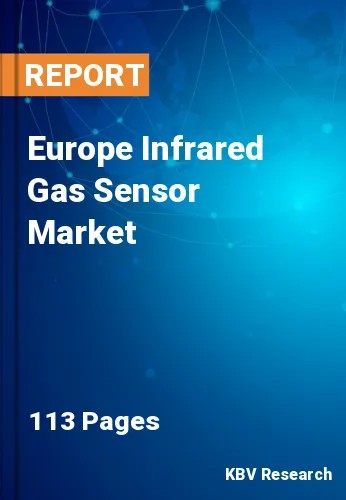The Europe Infrared Gas Sensor Market would witness market growth of 7.9% CAGR during the forecast period (2023-2030).
Wearable gas sensors for environmental and human health monitoring are anticipated to become commercially accessible soon, according to Penn State and Northeastern University researchers. Due to its self-heating process, these sensors are expected to have a very high sensitivity. The sensors the researchers use to detect gases, biomolecules, and other chemicals are made of a highly porous single line of nanomaterial. The market is driven by rising infrared gas sensor use in HVAC systems, increased adoption of air quality monitoring in smart cities, and a rise in regulatory standards and emission control laws.
The increasing demand for security devices that enable thermal imaging, particularly in hazy atmospheric conditions to spot targets or terrorist activities, as well as the rising demand for autonomous vehicles that include IR sensors for usage in night vision systems, among other applications, are driving the market growth for infrared sensors. It may also be used for art restoration, moisture analyzers, gas detectors, and petroleum exploration.
According to the Huawei UK Index, London and Bristol are the top two embracing smart city solutions. There are several smart city efforts taking on in the area. For instance, the European Union launched several funding initiatives in 2017 to support the growth of smart cities throughout the continent. To hasten the development of smart cities in the European area, the government has introduced the "SET Plan" and the "7th Framework Programme" for research. Similarly, the Climate and Energy Fund and the Federal Ministry of Transport, Innovation, and Technology (BMVIT) make significant investments in the creation and execution of smart city initiatives in Austria.
The Urban Platform initiative illustrates how European cities promote better social outcomes through interaction aimed at enhancing knowledge and management within significant amounts of city data, further establishing a link between the data sharing and the improvement of city services via the European Innovation Partnership for Smart Cities & Communities (EIP SCC). The market is predicted to grow due to the construction of smart cities throughout Europe.
The Germany market dominated the Europe Infrared Gas Sensor Market by Country in 2022, and would continue to be a dominant market till 2030; thereby, achieving a market value of $21,819 million by 2030. The UK market is experiencing a CAGR of 7% during (2023 - 2030). Additionally, The France market would exhibit a CAGR of 8.7% during (2023 - 2030).
Based on Type, the market is segmented into Fixed, and Portable. Based on Vertical, the market is segmented into Industrial, Healthcare, Automotive, Consumer Electronics, Defense & Military, and Others. Based on countries, the market is segmented into Germany, UK, France, Russia, Spain, Italy, and Rest of Europe.
Free Valuable Insights: The Worldwide Infrared Gas Sensor Market is Projected to reach USD 382.8 Million by 2030, at a CAGR of 8.4%
The market research report covers the analysis of key stake holders of the market. Key companies profiled in the report include Heimann Sensor GmbH, Amphenol Corporation, smartGAS Mikrosensorik GmbH, Alphasense Ltd (Ametek, Inc.), ABB Group, Senseair AB (Asahi Kasei Corporation), Process Sensing Technologies, Honeywell International, Inc., Dragerwerk AG & Co. KGaA, and Figaro Engineering, Inc. (New Cosmos Electric Co., Ltd.).
By Type
By Vertical
By Country
Our team of dedicated experts can provide you with attractive expansion opportunities for your business.

